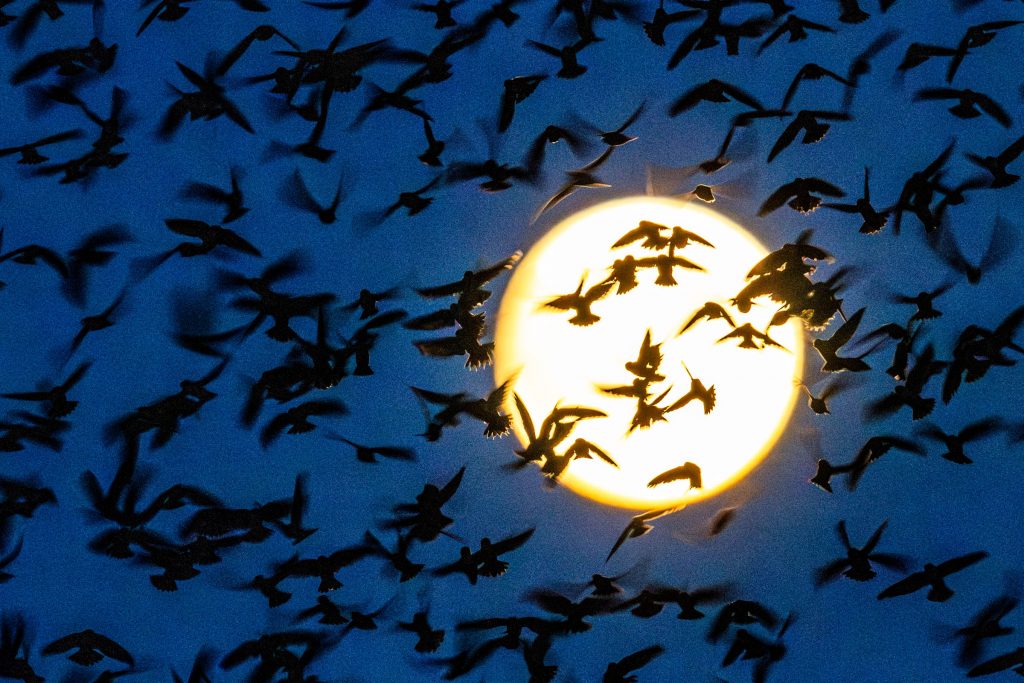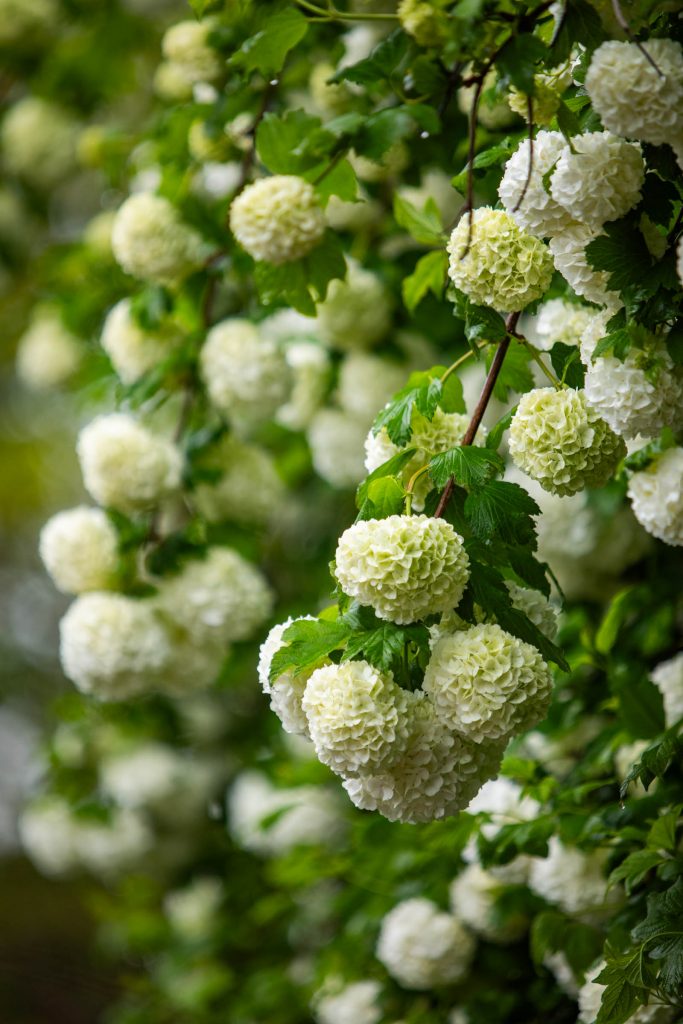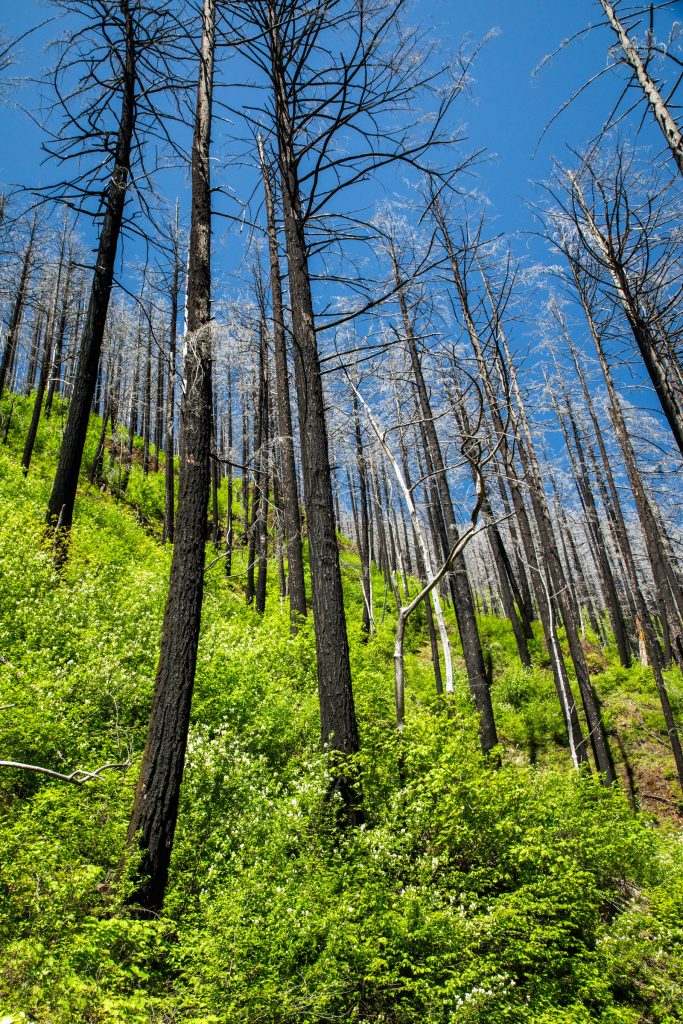This is another catch-all posting of assorted photos and stories from the past 6 months or so.
Portland’s Forest Park is a living green gem, coating a huge swath of steep northwest hillsides from the bottom of town to the summit. I’ve spent a wealth of time along its dozens of miles through maturing forest over the past 20+ years. Each visit grants me new discoveries. On this occasion, I rounded a corner to a set of bushes that were being combed by a mixed-flock of small songbirds – including Black-capped Chickadees, Spotted Towhees, Song Sparrows and a number of Golden-crowned Kinglets like this one.
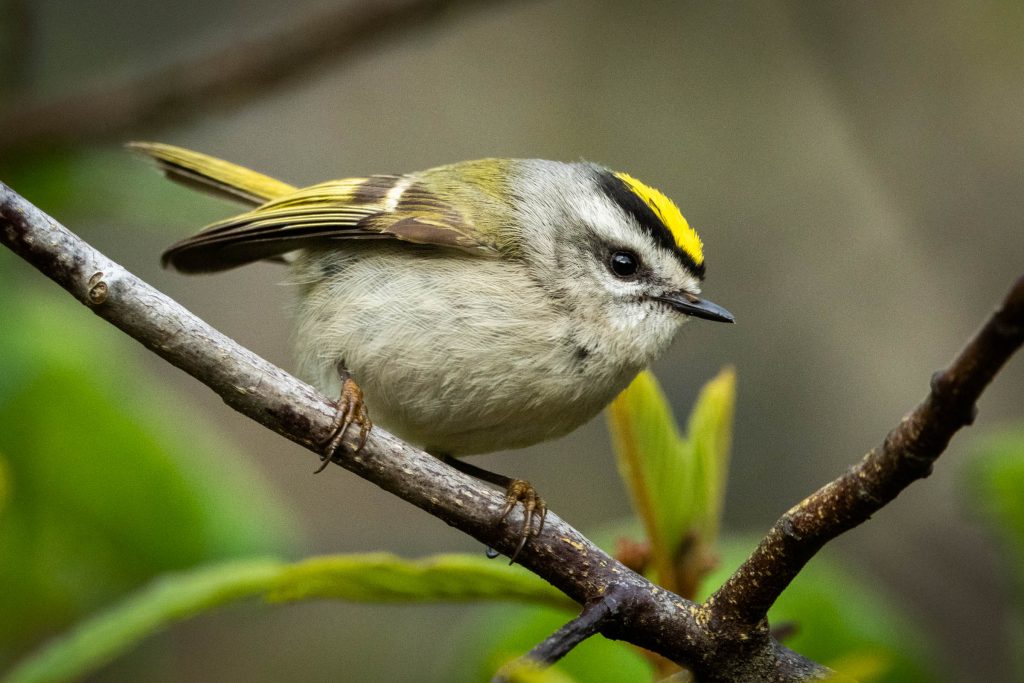
One hundred twenty years ago, along the Columbia River a bit north of Fort Vancouver, Hulda Klager indulged her passion as a lilac hybridizer. She created over a dozen new varieties of these dazzling and fragrant flowering trees. The trees have long outlived their creator. Today, her former home is a public garden, where visitors can enjoy her legacy. This particular lilac isn’t the largest or most potent, but I love the way the misty rain stuck to these budding blossoms.
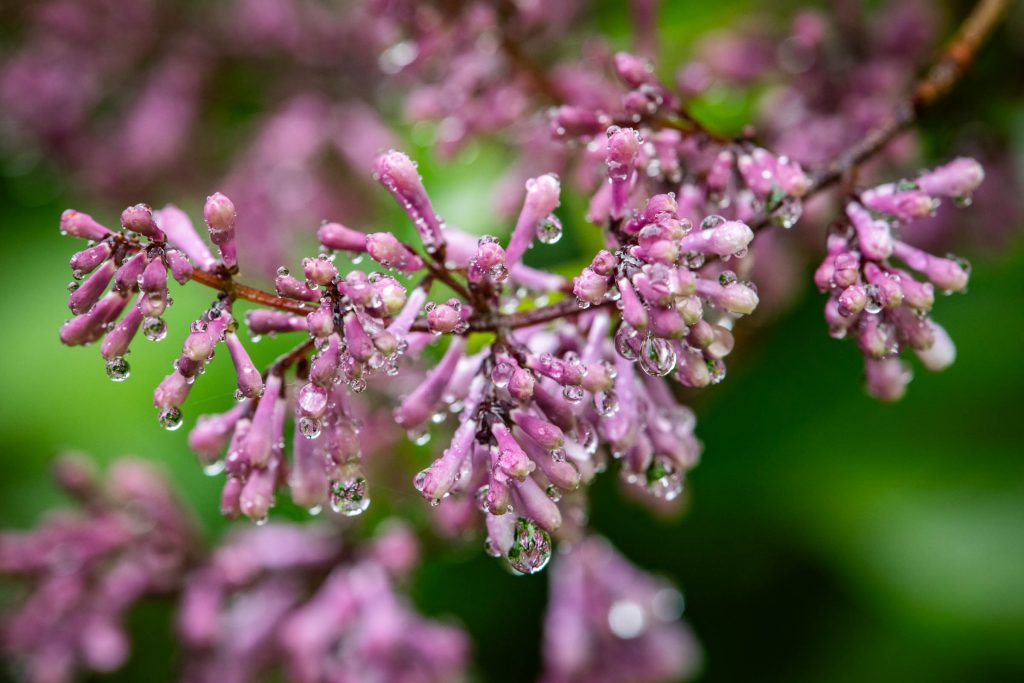
The Hulda Kluger Lilac Gardens have many complementary plants to enjoy. I believe this is a type of Tree Hydrangea.
On a drizzly day, ordinary scenes become magical. Water gives life.
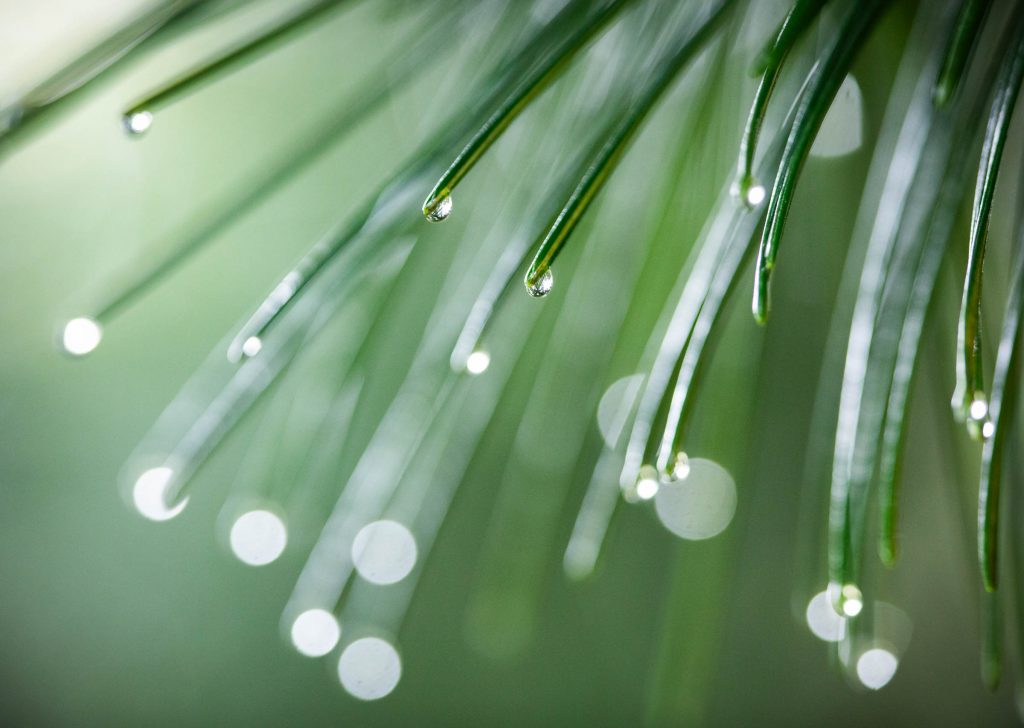
The Cedar Creek Grist Mill was built in 1876. It’s still standing, and even operating as of 2024. The mill was built to process grains, and to this day, you can visit and see a demonstration of this timeless technology.
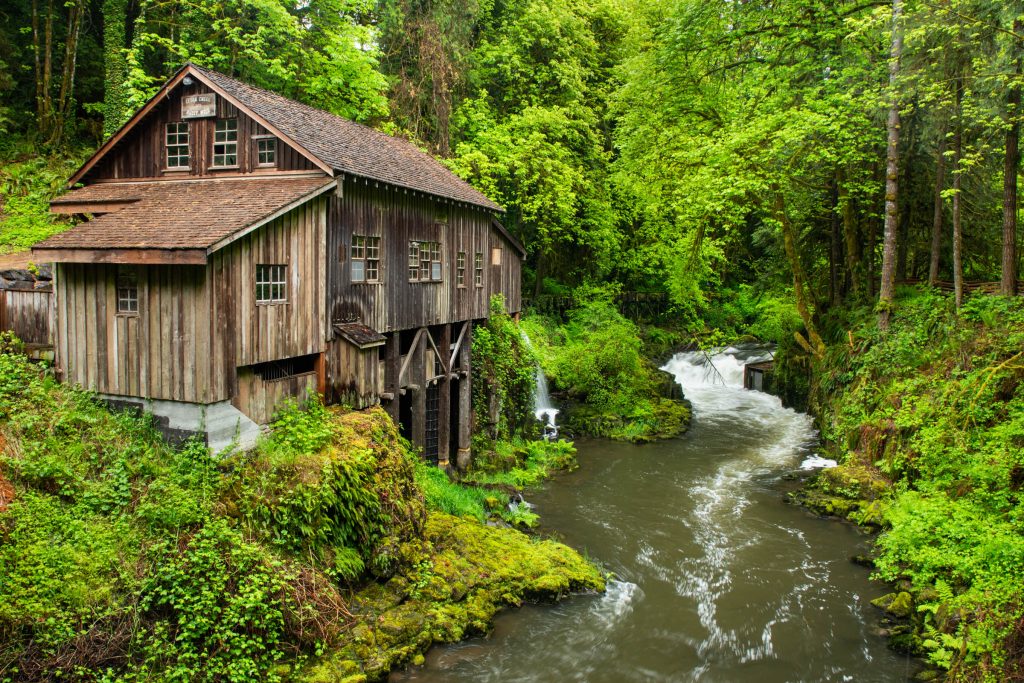
In the late summer of 2020, a careless youth lit some fireworks along Eagle Creek, in the Columbia River Gorge. The resulting fire instantly transformed this place. For years, I wandered along miles of steep canyons, through tall shady forests. Today, this is the landscape at Oneonta Canyon. The extant habitat is a piece of our overall ecosystem, and supports a diversity of life, but it’s simply not what it once was. These charred trees are monuments to our time as caretakers. It will take centuries before they are subsumed into the earth, and the forest we once knew is reborn.
I was in the bathroom, in the parking lot of Ryerson Woods Forest Preserve when I heard an unfamiliar bird song piercing the concrete walls. I pulled out my phone and turned on Merlin – the spookily-accurate AI-powered bird song identification app. It suggested the song belonged to a Cerulean Warbler. This kind of news sets off alarm bells in most birders – Cerulean Warblers are rare blue gems of the forest canopy. I quickly got myself together and ran outside to find the individual responsible for the song.
I later learned this particular bird was already known to the local birding community. I’d stumbled upon this treasure by accident. I picked this location by studying a map; it appeared to be the quietest forest preserve in the area – a rare sanctuary in busy Chicagoland. It seems the warbler came to the same conclusion. At the time, this was the only known Cerulean Warbler for hundreds of miles.
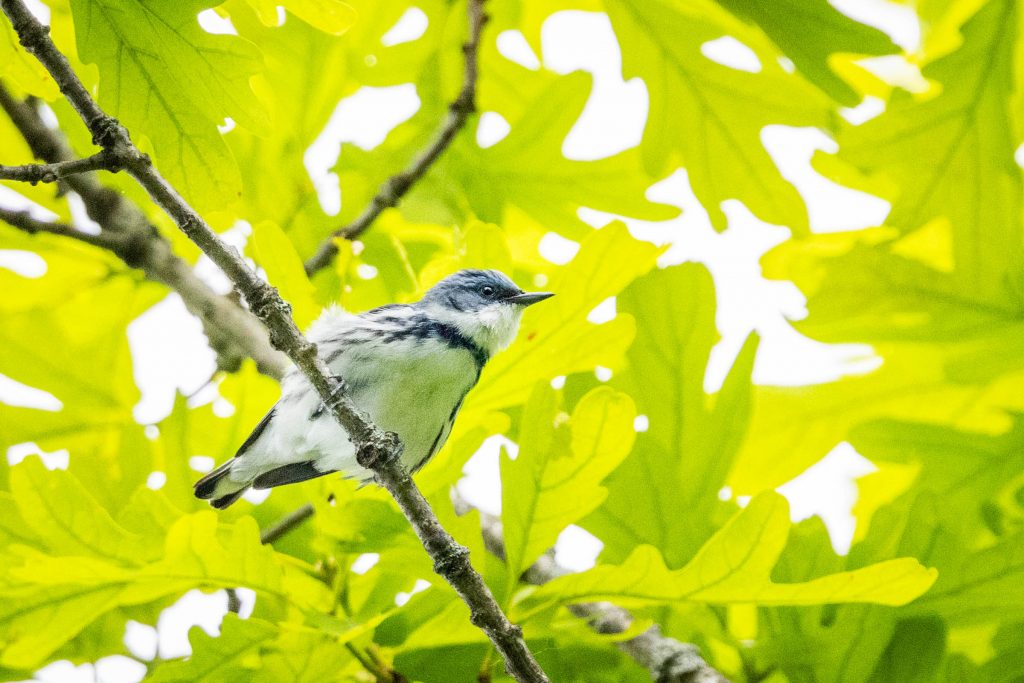
Often, I first see interesting birds with my ears. Walking among the thick woodlands of the Tillamook State Forest, I heard a “pip!” and turned my head… Could that be a Red-breasted Sapsucker? Where? Oh, on top of a mossy snag – with a meals-worth of bugs in its bill.
This bird was heading to its hole to feed some hungry younglings. I could tell my presence was alarming it, so I quickly moved on.
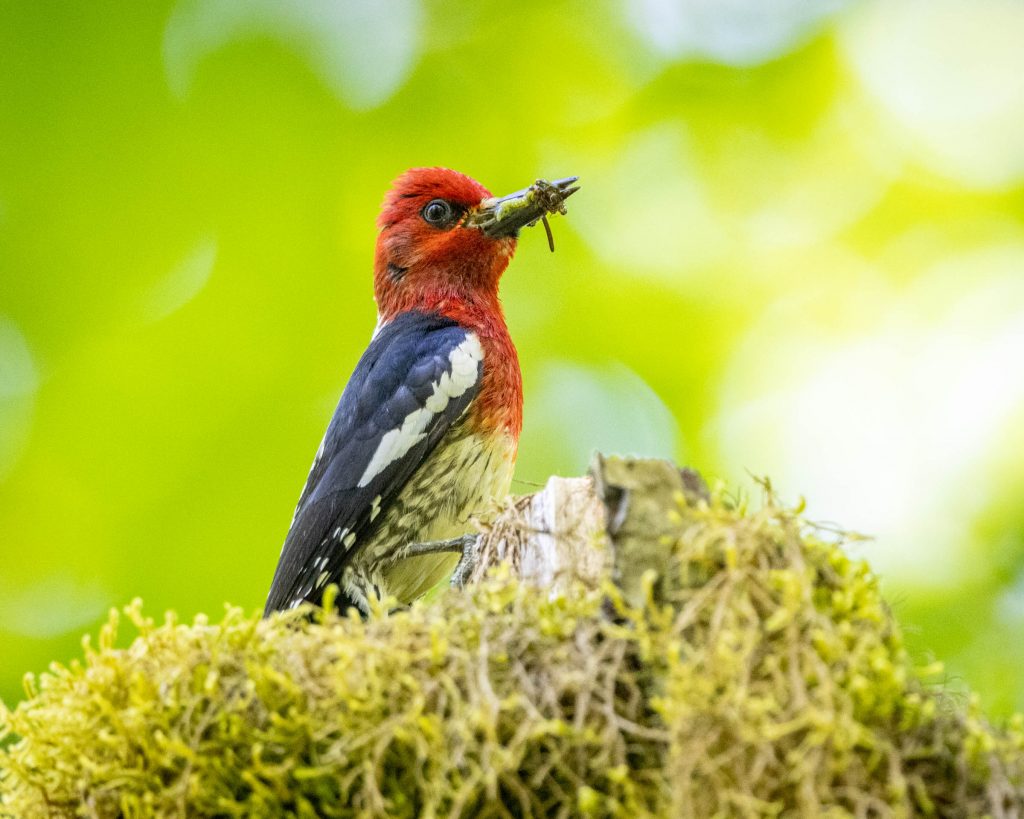
I’ve seen a lot of Wilson’s Warblers in my days. But it’s a rare occasion when one poses and sings from the branches of a bush a few feet to the side of a trail.
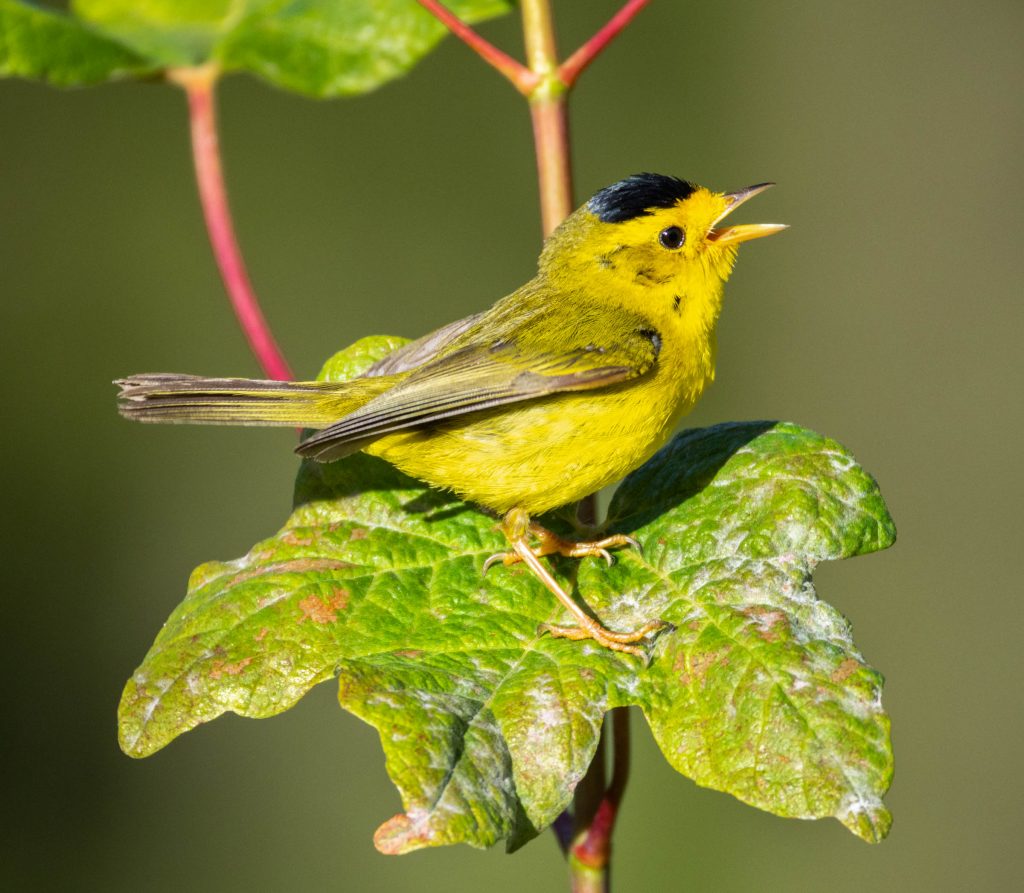
This fungus is knowns as Chicken of the Woods. This particular specimen was popping-out of a rotting log along the Wilson River Trail.
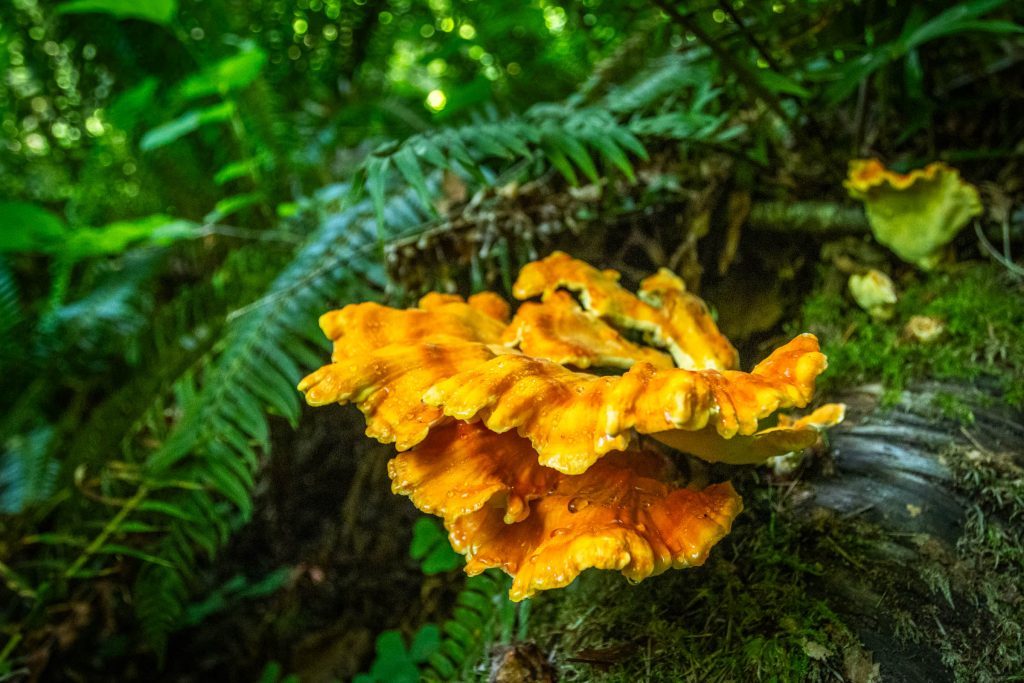
Yes, another Wilson’s Warbler. I think the spider dangling by a leg might have a chance to escape. I’m not sure how it turned out.
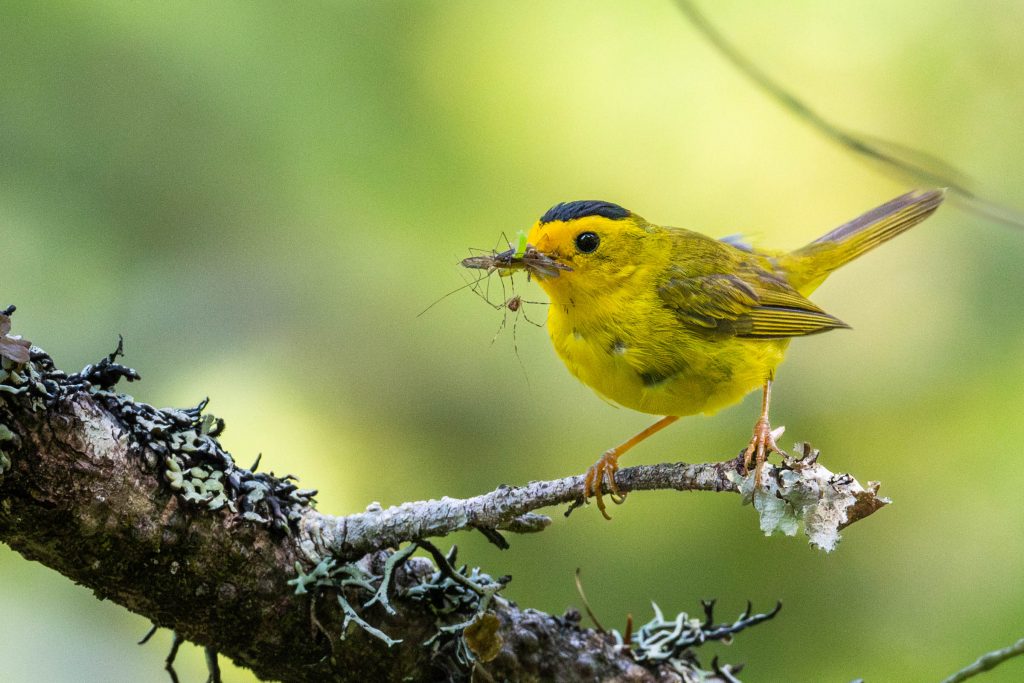
For some weeks, I had been hearing reports of a Red-footed Booby in Port Townsend. Washington. These are a tropical species. But in summer, young birds wander across the Pacific to see what’s out there. This one found good fishing in the Puget Sound summer, and decided to stick around. It’d been putting on a show for over a month near the Pacific Science Center – located on a pier in Ford Worden State Park, just north of town.
As it happened, we were passing through the area, and figured it was worth checking out. We arrived in the midst of Labor Day holiday chaos. The mostly oblivious revelers numbered in the dozens. But the Red-footed Booby didn’t seem bothered. It preened on top of a piling for 30 minutes or more as a handful of curious birders recorded its every move.

I was focusing on a female Belted Kingfisher, when I heard the distinctive Clack-ack-ack-ack-ack-ack of another Kingfisher coming in hot. A male was making the ruckus. Was he just being silly? Showing off? He didn’t seem aggressive, but he did bump the female off this piling a split second after I snapped this photo.
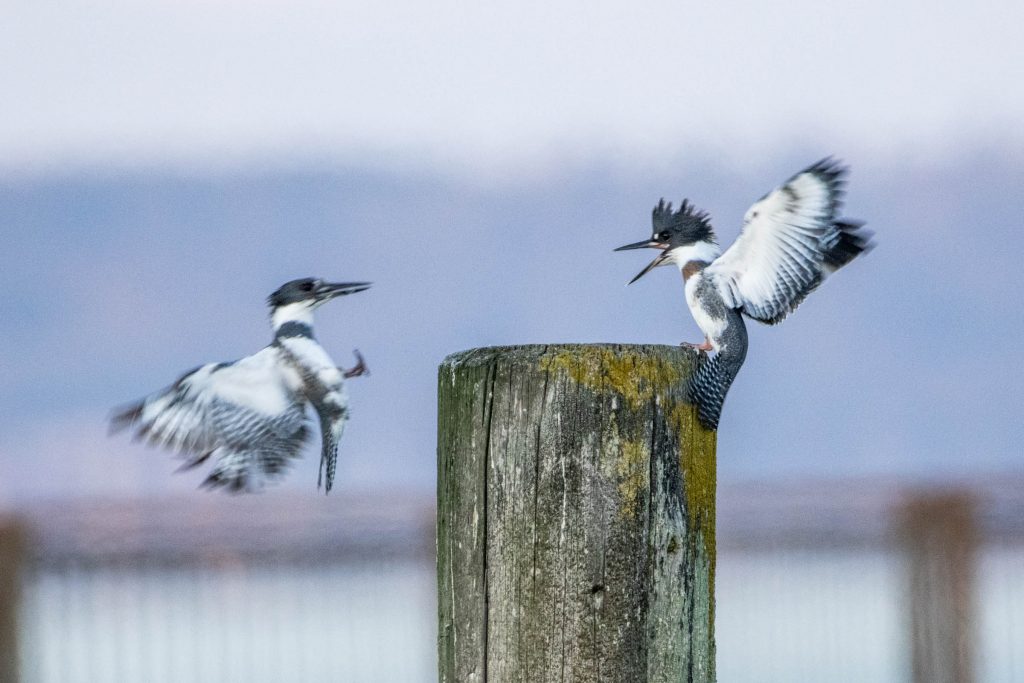
The ferry departed Port Townsend just as the sun crested the horizon and lit-up the sky. The gentle ripples of an early morning reflected the colors above. I believe this is a Heerman’s Gull on the log – with a distinctive orange bill.
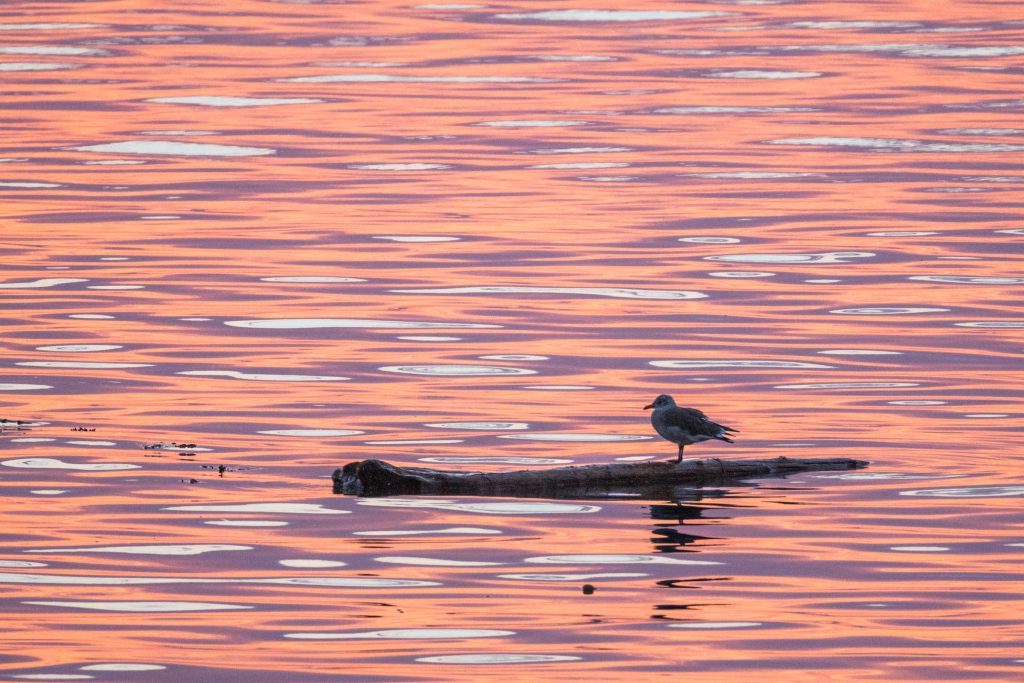
Mt. Baker overlooks the waters of northern Puget Sound. This heavily-glaciated volcano is 10,781ft high.
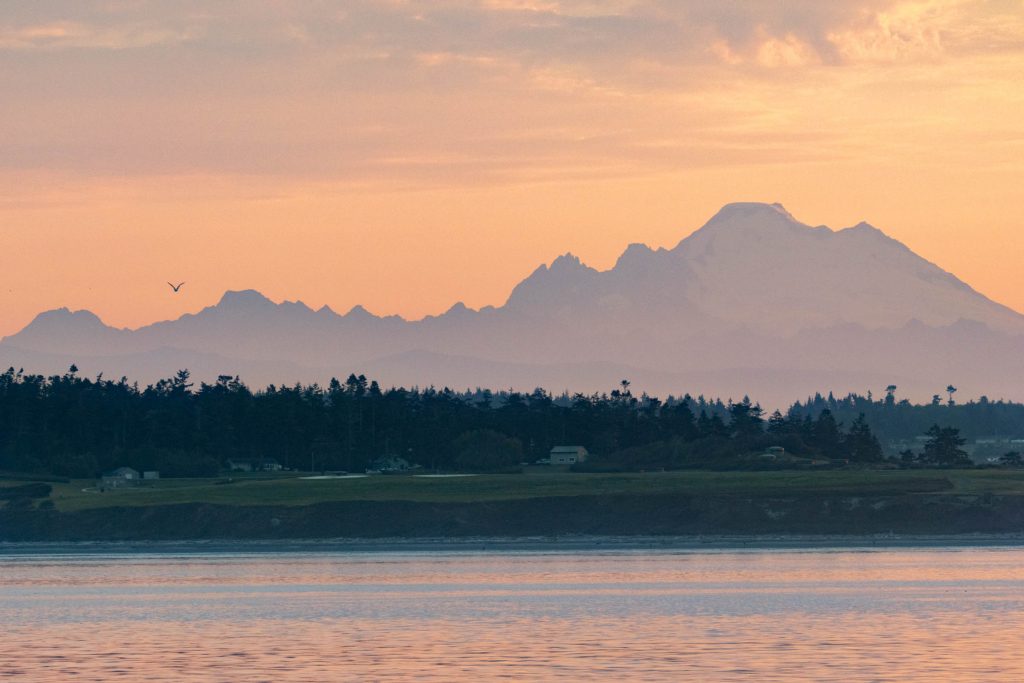
A massive storm of 20,000 Vaux’s Swifts flutter down to roost in a chimney as the full moon rises behind. These swifts roost in large numbers during migration at many large chimney along the entire west coast of the US. This is one of the busier locations in Rainier, Oregon.
